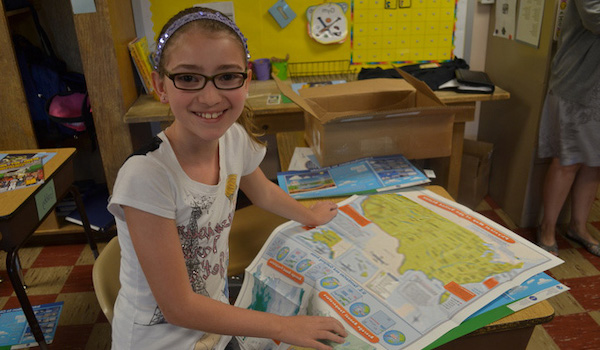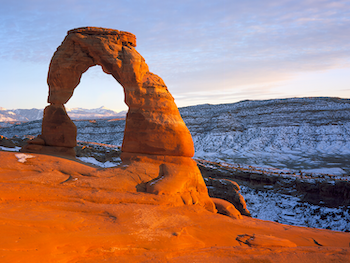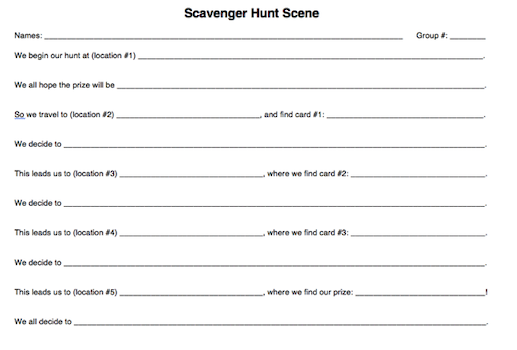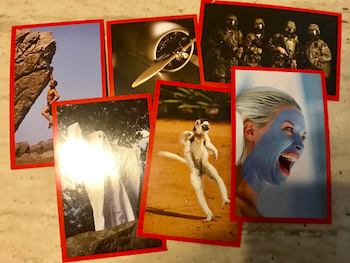SUBJECTS
GRADE
Show Results
Scavenger Hunt Through Geography

Lesson Summary
- Create and perform a scene about going on a scavenger hunt through geography.
- Practice using a map to find geographic locations.
Lesson Plan and Procedure
Lesson Key Facts
- Grade(s): 3, 4, 5
- Subject(s): Drama, English Language Arts, Social Studies
- Duration of lesson: 55 minutes
- Author(s): Haley Flanders Anderson
Note: Make sure you have your materials and enough room for the students to move. Prepare the students beforehand with knowledge of maps and vocabulary relevant to geography topics such as the following:
- Third Grade: Communities, biomes, ecosystems, cities, countries, states, and indigenous America
- Fourth Grade: Utah political and topographical geography
- Fifth Grade: United States political and topographical geography
Warm-Up/Hook
Divide the students into groups of four or five. Hand each group a map/atlas of current geography topics being studied (topographical or political).
Teacher: We are going to play “I Spy.” Each group will spot a location on the map, and the rest of us will try to locate it based on your group’s clue. For example, a group can say, “I spy a county that starts with U,” or “I spy a mountain region to the west.”
Play as many rounds as you like.
Reflection
Teacher: What did you enjoy most about this game? What was difficult? Did you recognize any geographic locations from our past lessons? Similar to the game we just played, we are going to find geographic locations and then create and perform a scavenger hunt scene.
Introduction
Teacher: How would you describe a scavenger hunt? Has anyone been on one before? What did you do?
Write down student responses on the whiteboard, including definitions of a hunt, where they hunted, the goal of their hunt, and so on.
Instruction/Rehearsal
Teacher: Each group will fill out a worksheet for the scavenger hunt scene.

Teacher: A narrator in your group will read from this as the rest of the group acts it out. You will choose five locations we have been studying and will be given three cards to create your scene. Write down what you hope the prize will be at the end of the hunt and what you actually receive. The prize could be the same as or different from what you hoped. At three of the locations, your group will use a card. Your group will write and perform an action response to the card, which then leads to your next location. For example, if your card has a picture of a robot on it, you could build a robot, turn someone into a robot, or perhaps find a robot. The robot can say, “Go to ____,” giving direction to the next location.
 Hold up a handful of picture cards.
Hold up a handful of picture cards.
Hand out a worksheet and three picture cards to each group. Give them time to write and rehearse. Give them access to maps as a resource.
Teacher: Your hope for a prize is the inciting incident that gives you a goal that begin the action in the story, and the climax is whether you receive that prize in the end. These elements are part of a story arc that turns your hunt into a story that can be acted out. As you write, include words that answer the six storytelling questions: who, what, when, where, why, and how. Use words that engage the senses and follow a steady story sequence. For the responses to the cards, choose action verbs that will be fun to perform, like jump, build, roll, or crash. When acting, animate your voice and body to create unique characters and effectively demonstrate the action verbs.
Activity/Performance
Invite the class to gather back up and watch each group perform. It is best to number the groups beforehand, so the scene transitions run smoothly. Remind the students of the importance of being a respectful audience. Encourage the actors to hold up their cards as they find them during the scene, so the audience can see them.

Conclusion
Teacher: What did you like about this activity? What did you learn? Did any groups use the same locations your group did? Has anyone visited or lived in these locations? What was the experience like to create and listen to fictional stories that contain real nearby geography? Did your scavenger hunt tell a story and use the elements of story? How did your group work together? What did you learn about working together as a group?
Possible Extension Activity
Make a list of all the locations mentioned in the scenes. Have the students do research to learn more about the five locations that they chose and then present geography reports.
The basic structure of the lesson can be used in a variety of ways, such as replacing the location with a time period in history, a part of the water cycle, or a cloud type. Reinforcing concepts and vocabulary while helping students to use their imagination and the elements of story are conducive to authentic learning.
Learning Objectives
- Establish a situation and characters who respond to actions.
- Use descriptions and concrete words.
- Provide a conclusion.
- Understand the relationship between geography and human life.
- Classify major physical geographic attributes of Utah.
- Develop imagination.
- Write a script that focuses on the six storytelling questions.
- Define roles and work in a group.
- Communicate character and story through physicality.
- Demonstrate audience skills.
- Identify similarities between story elements and personal experiences.
Utah State Board of Education Standards
This lesson can be used to meet standards in many grades and subject areas. We will highlight one grade’s standards to give an example of application.
Grade 4 English Language Arts
Standard 4.W.3: Write narrative pieces to develop real or imagined experiences or events using effective technique, descriptive details, clear event sequences, and provide a resolution.
Orient the reader by establishing a situation and introducing a narrator and/or characters; organize an event sequence that unfolds naturally.
Use dialogue and description to develop experiences and events or show the responses of characters to situations.
Use a variety of transitional words and phrases to manage the sequence of events.
Use concrete words, phrases, complex sentences, and sensory details to convey experiences and events precisely.
Use appropriate conventions when writing including text cohesion, sentence structure, and phrasing.
Grade 4 Social Studies
- Standard 4.1.1: Use a variety of geographic tools to identify Utah and its surrounding states: latitude, longitude, hemisphere, climate, natural resources, landforms, and regions (for example, Rocky Mountains, Colorado Plateau, Basin and Ridge Region).
- Standard 4.1.2: Examine maps of Utah’s precipitation, temperature, vegetation, population, and natural resources; make inferences about relationships between the data sets. Describe how and why humans have changed the physical environment of Utah to meet their needs (for example, reservoirs, irrigation, climate, transcontinental railroad).
- Standard 4.1.3: Describe how the physical geography of Utah has both negative and positive consequences on our health and safety (for example, inversions, earthquakes, aridity, fire, recreation)."
Grade 4 Drama
- Standard 4.T.CR.1: Develop imagination to create artistic ideas and work.
- Standard 4.T.CR.3: Write or record simple dramas that include the five Ws of who, what, where, when and why.
- Standard 4.T.CR.4: Define roles, identify responsibilities, and participate in group decision making.
- Standard 4.T.CR.5: Create character through imagination, physical movement, gesture, sound and/or speech and facial expression.
- Standard 4.T.P.3: Observe, listen, and respond in character to other actors throughout a scripted or improvised scene.
- Standard 4.T.P.4: Communicate meaning using the body through space, shape, energy and gesture.
- Standard 4.T.R.1: Demonstrate audience skills of observing attentively and responding appropriately.
- Standard 4.T.CO.1: Identify similarities between story elements and personal experiences in dramatic play or guided drama experiences.
Equipment and Materials Needed
- Pencils
- Cards with pictures of people, places, and things (four per group)
- Examples: Big Picture Apples to Apples cards, student drawings, Dixit game cards, photographs, magazine cutouts
- “Scavenger Hunt All over Utah” worksheet (one per group)
- Atlases/maps of Utah, topographical and/or political (one per group)
- Whiteboard and dry-erase markers
Additional Resources
- A blog post by Haley Flanders featuring the performance of this activity at South Jordan Elementary in 2016: http://haleyflanders.blogspot.com/2016/02/day-12-final-performance.html
- Part of this performance is featured in this video about the BYU Arts Bridge program: https://vimeo.com/167492652
- Resources to assist with Utah geography, including maps, facts, pictures, and history:
- Big Picture Apples to Apples cards, highly recommended for this activity: https://www.amazon.com/Mattel-Big-Picture-Apples-Game/dp/B00F2K9I7O
- Dixit game cards, which are more artistic and interpretive than the Apples to Apples cards, but would be excellent for creative minds: https://www.amazon.com/s/ref=nb_sb_noss?url=search-alias%3Dtoys-and-games&field-keywords=dixit+game
Image References
- Image 1: https://nara.getarchive.net/media/west-hanover-township-pa-may-2-2013-west-hanover-elementary-school-fourth-grade-b19493
- Image 2: https://commons.wikimedia.org/wiki/Utah#/media/File:Delicatearch.png
- Images 3, 4, 5: Haley Flanders Anderson.

www.education.byu.edu/arts/lessons
 Download
Download